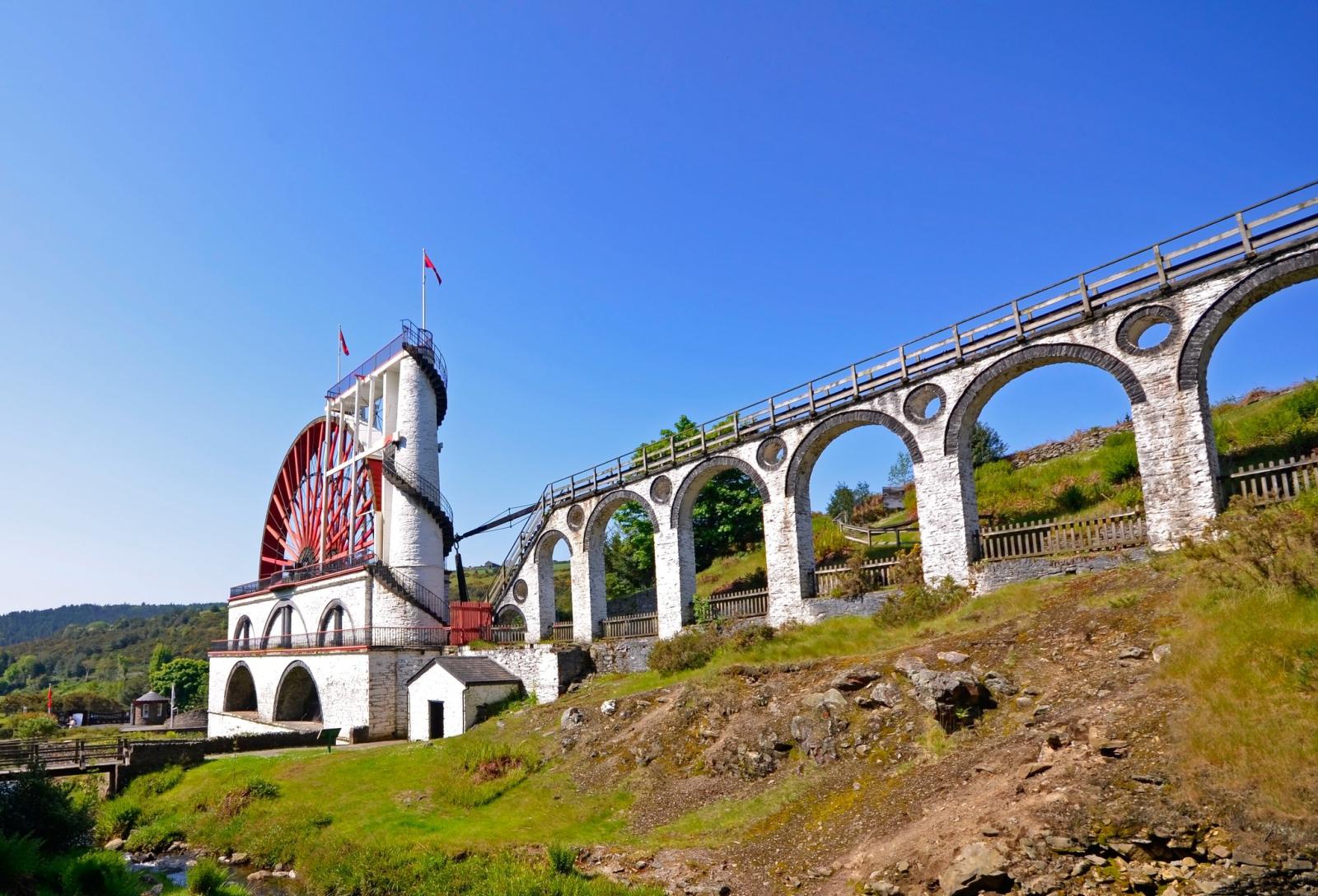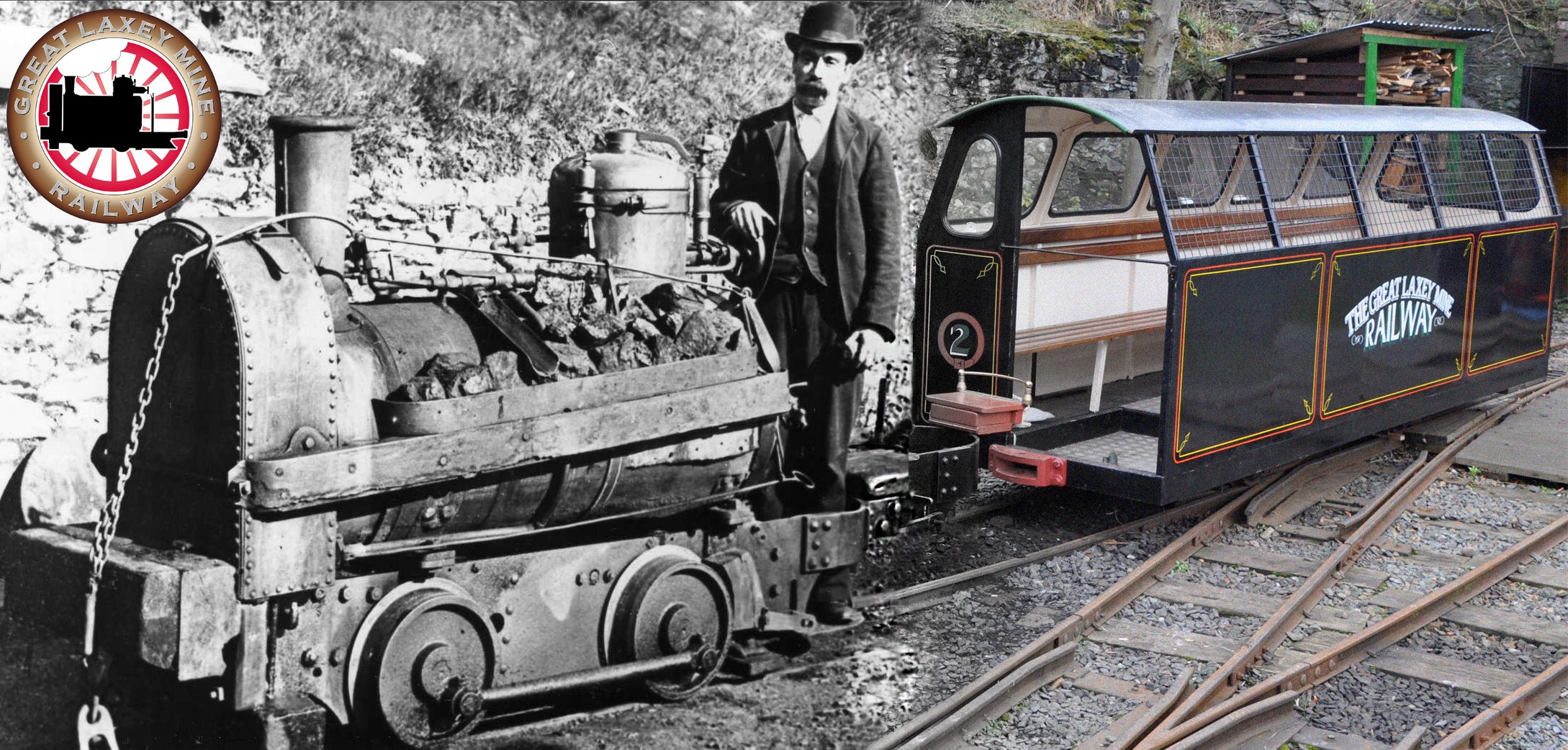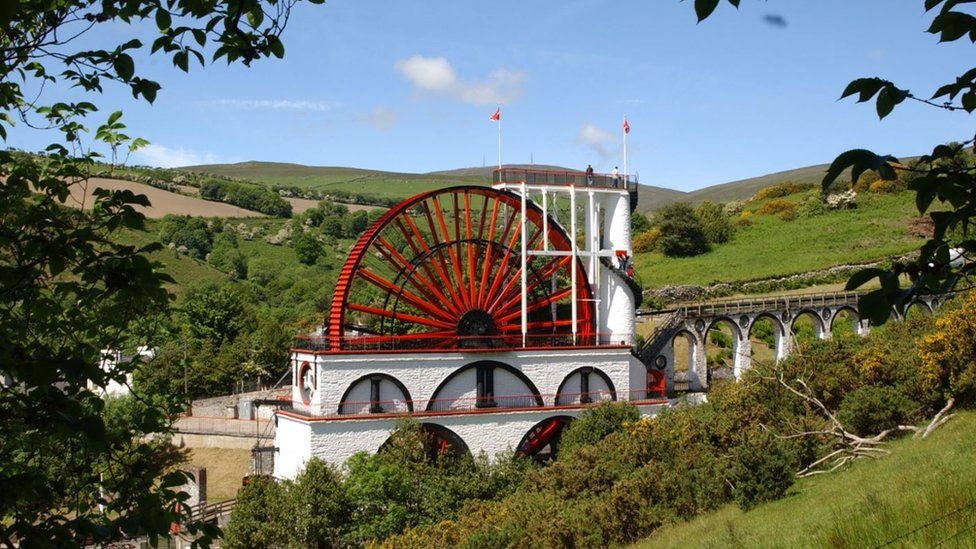By Maria Papagiannopoulou,
On the Isle of Man’s east coast sits the village of Laxey. It gets its name from the Old Norse word “Laxa”, which means “Salmon River”. Its three operational antique railroads and the biggest operational waterwheel in the world serve as its defining characteristics. The grave of King Orry is also there.
Lead and zinc mining started in the 19th century and eventually became the main activity in the community before coming to an end in 1929. The fishing industry was also present in the village.
The town became accessible to tourists once the Manx Electric Railway line was built through it in the late 1800s. At that period, the Snaefell Mountain Railway and the Laxey Glen Pleasure Gardens were among the attractions that were constructed.
Now is primarily a residential and tourism area, Laxey village. There are many public gardens, but Laxey Glen Gardens are the most notable. Additionally, a handweaving business sells a variety of goods, including its own. The Old Laxey Brewing Company, a microbrewery, and five pubs are both present in the village.

The settlement is surrounded by a wooded glen, and there are a number of steep, twisting alleys and trails that descend to the glen’s floor. From there, one can stroll along the Laxey River’s bank to the little harbor where it empties into the sea, and then onto the beach and promenade. From the area in front of the “La Mona Lisa Restaurant”, one may also go along the cliffs that are to the north of the beach.
Many of Laxey’s structures were constructed as typical Manx mining houses. The Minorca region is located above the left bank of the Laxey River, southeast of the village center. Around the harbor in Old Laxey are twisting lanes. The area of stores and services around the train station is farther inland and is a newer, late Victorian component of the village center.
The Great Laxey Mine was a source of zinc, lead, and silver. The Welsh Shaft, the Dumbell’s Shaft, and the Engine Shaft were the main three shafts in the mine, which had a depth of more than 2,200 feet (670 meters). These shafts were connected by a network of levels.
The beginning of mining at Laxey cannot be pinpointed, although by 1782 workings were being established. The mine produced substantial amounts of zinc, silver ore, copper pyrites, and hematite iron. By the 1830s, more than 200 men were working in the mines; this number increased rapidly until it reached over 600 by 1900.

After a number of temporary closures, by May 1929, rumors concerning the mine’s future had started to spread. Most of the miners had already departed at that point, with many moving to South Africa, Australia, or the United States of America. Mining activities at Laxey and on the Isle of Man were eventually discontinued due to persistent flooding in the lower sections of the mine and outdated pumping equipment. But some of the spoil residues were taken to the washing floors to see if there was any value left in them. This is believed to have continued until 1934 when all construction was eventually stopped.
In order to pump water from the Laxey mine shafts, Laxey Wheel — also known as Lady Isabella after the wife of The Hon. Charles Hope-Weir, then Lieutenant Governor of the Isle of Man — was constructed in 1854. It is still the biggest operational waterwheel in the world and is now a popular tourist destination. Its diameter is 72 feet 6 inches (22.1 m), and its width is 6 feet (1.83 m), both designed by Robert Casement. It spins at around 3 rpm.
From 1939 to 1965, Ed Kneale owned The Wheel. He protected it from being demolished and operated it as a tourist attraction before giving it to the Manx country, with the understanding that it would be maintained in working order for the residents of the Isle of Man. The wheel and the location were bought by the Isle of Man government in 1965. Restoration work started, and Manx National Heritage was given custody of it in 1989.
In September 2004, the Great Laxey Mine Railway reopened with two miniature steam engines to transport travelers along the line that had been repaired.

John Ruskin helped Egbert Rydings find the Laxey Woollen Mills in 1881, and they were first powered by water. The mills are renowned for creating Manx tartan, which is used to create a wide range of products, including capes, rugs, caps, scarves, and kilt skirts. The fabric is manufactured on antique-style looms from quality Manx Loaghtan wool. One loom is powered by a bicycle. The mills still weave the Manx tartan and other fabrics, although they are now mostly used as a working shop. Along with a bustling craft store, a tearoom, and the Hodgson Loom Gallery, which hosts monthly art and craft exhibitions, the Laxey Woollen Mills also house other businesses.
There were several Methodist chapels in Laxey. The 1825-built Shore Road Primitive Methodist Chapel was demolished in 1870. In 1850, the Glen Road Wesleyan Methodist Chapel was inaugurated. 1966 saw its closure. The Minorca Primitive Methodist Chapel was established in 1870, and a Sunday School was constructed across the street in 1898. The chapel closed in 1966 when Glen Road and Minorca merged. The Minorca Sunday School building was converted into Laxey’s new Methodist chapel in 1970.
The Mining Company spent £950 constructing Christ Church, a Church of England parish church built to Ewan Christian’s plans. On May 27, 1856, Lord Auckland, Bishop of Sodor, and Man, blessed it.
References
- Laxey, wikipedia.org, Available here
- Great Laxey Wheel needs ‘a little rain’ to turn again after reopening, bbc.com, Available here




